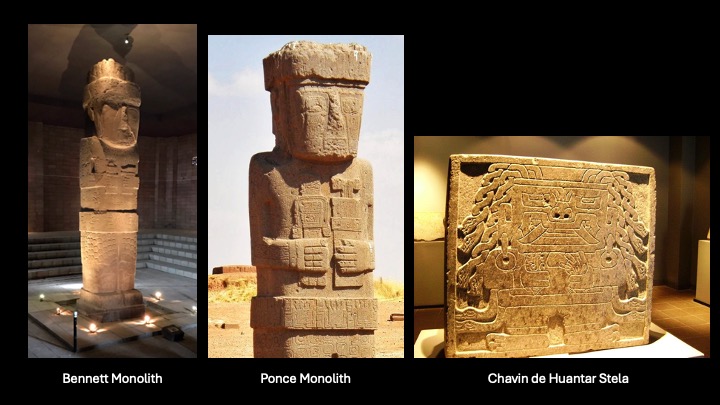Tiwanaku
The ancient city of Tiwanaku ruled the Southern Andes for 1000 years. From the Pacific Ocean to the Amazon, their empire spread far and wide. 12,500 ft asl on the shores of Lake Titicaca, the city itself boasts the largest megaliths ever created in South America.
SHOW NOTES


https://heritagesciencejournal.springeropen.com/articles/10.1186/s40494-018-0231-0
Alexi Vranich’s 3D files can be found following this link.

Tiwanaku is #1 on my bucket list of places to visit! So I loved this episode. I really hope you will do an episode all about Puma Punku too as you mentioned. I recently finished reading Alan Kolata’s book “The Tiwanaku: Portrait of an Andean Civilization” and it was fascinating. This was such an amazing city and culture, and to your point from this episode they were intimately connected to all the other regions and cultures around them. One of these days I’m going to finally save enough money to make the trip there and see it for myself. By the way, I always love hearing new little details and connections about your Fanged Deity hypothesis. When are you going to write all these years of research up into a book so we can all read in-depth about it??? 😉
Thanks Daphne! I hope to get back to writing my Fanged Deity book this fall. Right now I’m working on a new Olmec lecture series and its taking 90% of my band width.
I will look forward to the Olmec series as well!
Hello Daphne Bell,
Dr. Barnhart is correct on the difficulties getting to the Tiwanaku site. We were staying in La Paz and travelling through the town of EL ALto which at the time had a running argument with the Mayor or the City of La Paz. There were make shift barricades and burning tires and such. Regardless, the trip was long for 75 kilometres but well worth the journey. As a child of the 1970s, “In Search of” narrated by Leonard Nimoy was my inspiration for the visit. For some reason, Peru is literally ground zero for ancient civilizations in South America. We started in Chile and travelled North to Lima, and La Paz was one of many sites along the way. We only received a 3 hour tour at the site unfortunately, but we got 35 minutes at Puma Punka. If you make it to the Lake Titicaca region and greater Peru, plan on taking a couple of weeks at least to see it all. And you only get a taste of the greater complexities of the region. I still have lots of questions which have no answers.
Fascinating. It seems Tiwanaku’s decline paralleled the end of the classical Maya civilization. Climate seems an unlikely explanation. Maybe similar overpopulation and soil erosion were to blame?
I thoroughly enjoyed your Tiwanaku discussion, I only wish I had heard it prior to visiting the site (in 2000), thanks for filling in the gaps in my appreciation of the historic Amira creation.
For those not in the know, there was a great effort back in 2018 by Alexei Vranich which resulted in 3D printed models of the blocks scattered around Pumapunku. If you have a 3D printer, the files are available for download from multiple sites and you can print up a 4% scale model and rebuild Pumapunku for yourself. It sure looks like this complex is the result of good old fashion human ingenuity. Something that we modern day humans don’t seem to want to ascribe to our “primitive” forefathers. Pers
The full paper is here: https://heritagesciencejournal.springeropen.com/articles/10.1186/s40494-018-0231-0#Sec1